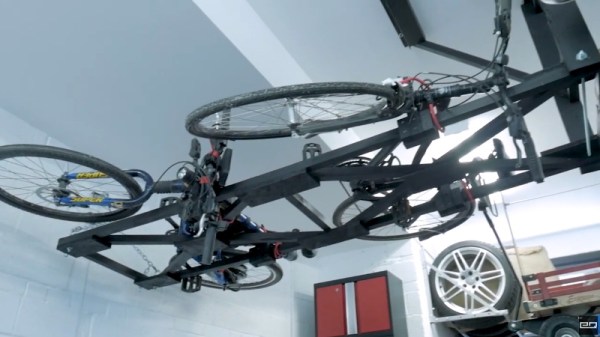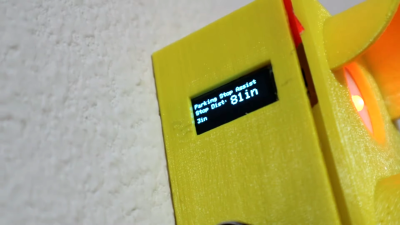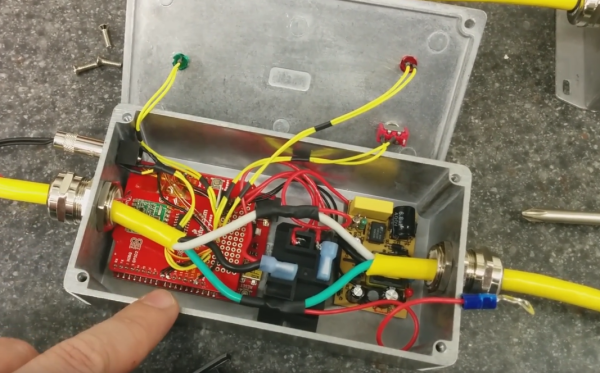There are a lot of things in our everyday life that are holdovers from an earlier time that we continue to use simply because of inertia even if they don’t make a lot of sense in modern times. Examples include a 60 Hz power grid, the spacing between railroad tracks, and of course the self-contained attic ladder which is made to fit in between standard spaced ceiling joists. It’s not wide enough to get big or heavy stuff into an attic, and building standards won’t change just for this one inconvenience, so if you want to turn that space into something more usable you’re going to need to build a custom elevator.
This attic elevator comes to us from [Brian] who recently moved into a home with about half the square footage as his previous home, but still needed to hold all of his stuff. That means clever ways of using the available space. For the elevator he constructed a platform out of 2x lumber held together with bolts and steel supports. The carriage runs up and down on a track made out 1 5/8″ super strut and is hoisted by a winch motor rated for 550 pounds, which is more than enough to hoist up most household items including a large toolbox.
The only thing that we would have liked to have seen in the video is how the opening was made. Presumably this would have involved cutting into a ceiling joist to make the opening wider than the standard attic ladder, and care would have needed to be taken to ensure the ceiling/floor wasn’t weakened. Either way, this is a great solution to a common problem, and could perhaps be made to work on more than two levels with a custom controller. Continue reading “Build Your Own Custom Elevator”



















